Bab Zuweila: The Heart of Cairo's Old City
Walking through the bustling streets of Cairo's Old City, you will notice an ancient gate standing tall and proud amidst the bustling chaos. Bab Zuweila, commonly called "the heart of Cairo's Old City," is a magnificent piece of history that has withstood the test of time. This towering structure has stood for over a thousand years and has witnessed countless stories of conquest, triumph, and devastation. Today, as one of the city's most iconic landmarks, Bab Zuweila is a testament to the richness and diversity of Egypt's cultural heritage. Let's look at what makes this ancient gate so special and why it attracts visitors worldwide.

Introduction
A brief overview of Bab Zuweila's Location in Cairo's Old City
Bab Zuweila is a historic landmark in Cairo's Old City, located in the Islamic district of Al-Darb al-Ahmar. It is one of the three remaining medieval gates in the old city walls of Cairo. This iconic gateway holds immense historical and cultural significance for the city.
In medieval times, Bab Zuweila was constructed as the southern gate in the second wall built around Cairo in 1092. Its grand entrance is adorned with towering minarets, offering a breathtaking sight for visitors. The intricate carvings and decorations showcase the skilled craftsmanship of its time.
Beyond its architectural beauty, Bab Zuweila played a crucial role in Cairo's defence system. In earlier times, its twin towers were used to scout for enemy troops and provide views of the surrounding countryside. The structure also served as a platform for executions and the Sultan's observation of the annual pilgrimage to Mecca.
Throughout Cairo's history, Bab Zuweila has witnessed important events and has been deeply connected to the city's social and economic life. Additionally, it has been associated with vibrant cultural traditions and festivals.
It is worth noting that Bab Zuweila is not the only attraction in the area. Nearby sites such as Al-Azhar Park and Sultan Hassan Mosque add to the allure of this historic neighbourhood.
Bab Zuweila stands as the heart of Cairo's Old City, showcasing the rich history and culture of the region. Its location, historical significance, stunning architecture, and connection to important events make it an enduring and captivating landmark worth exploring.
Importance of Bab Zuweila as a Historical and cultural landmark
Bab Zuweila is a significant historical and cultural landmark located in Cairo's Old City. Constructed in 1092, it is one of the three surviving gates that provided entry into the fortified medieval city of Cairo. As the last remaining southern gate from the walls of Cairo, it served as a gateway for overland travellers and a trade route. The grand entrance and towering minarets of Bab Zuweila are breathtaking sights adorned with intricate carvings and decorations.
Beyond its architectural beauty, Bab Zuweila played a crucial role in the city's defence system. The minarets were used to scout for enemy troops, and the platform witnessed important events, including executions and the beginning of the annual pilgrimage. Moreover, the gate holds extraordinary historical significance, notably during the clash between the Mamluks and the Mongols, which marked a turning point in the expansion of their empire.
Bab Zuweila is not only an architectural marvel but also a cultural hub. It is associated with cultural traditions and festivals, reflecting the vibrant heritage of Cairo. Visitors to Bab Zuweila can also explore nearby attractions such as Al-Azhar Park and Sultan Hassan Mosque.
Bab Zuweila's importance as a historical and cultural landmark cannot be overstated. Its ancient origins, architectural splendour, and role in shaping Cairo's history make it an enduring legacy and a must-visit for tourists and history enthusiasts alike.
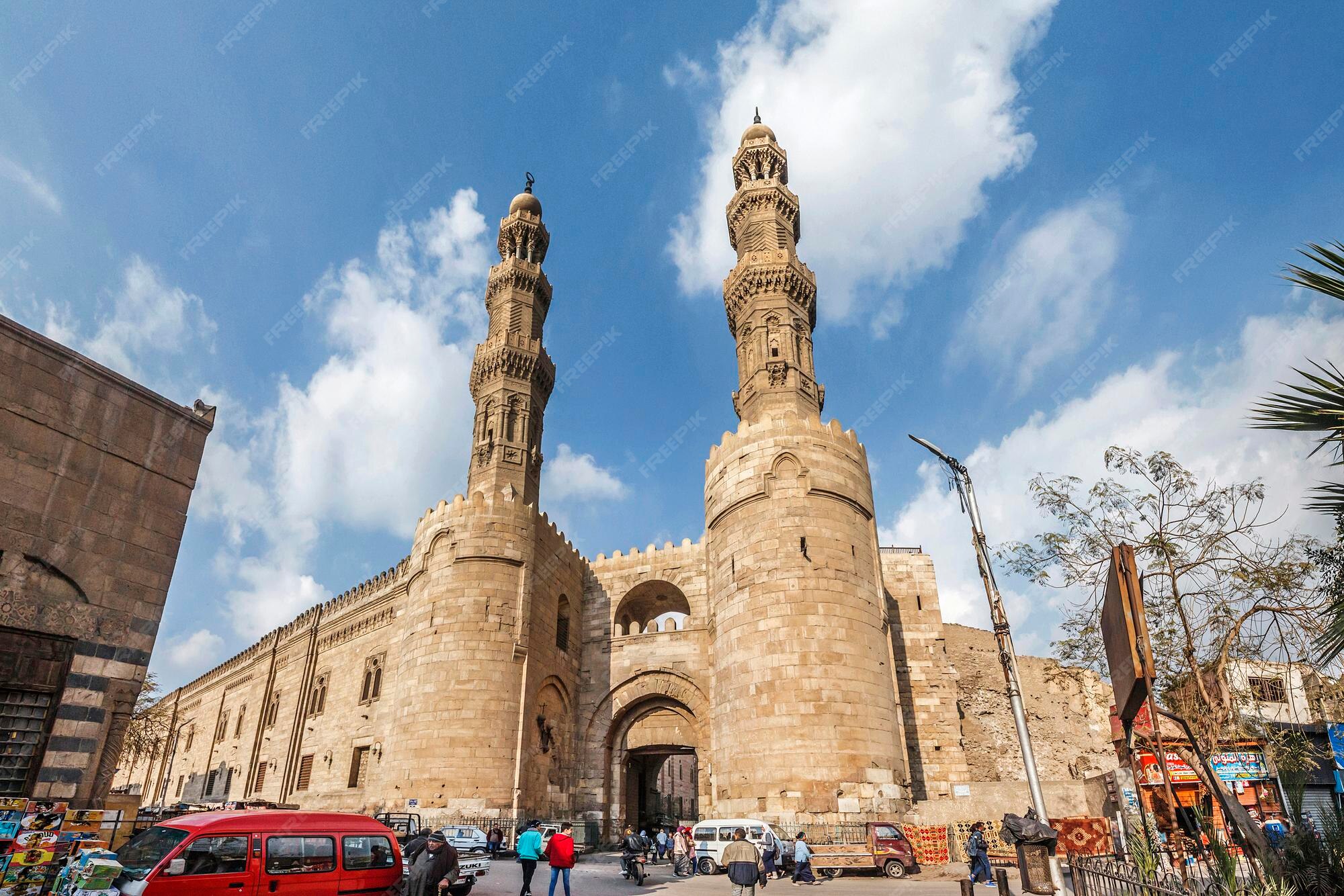
Historical Background of Bab Zuweila
Origin and Construction of Bab Zuweila in Medieval Times
Bab Zuweila is a historic gate in Cairo's Old City. It was built in 1092 as part of the second wall erected around Cairo. The gate is one of the three surviving gates that provided entry into the fortified city. It is distinguished by its twin towers, or minarets, which offer panoramic views of the surrounding countryside.
Throughout its existence, Bab Zuweila has played a significant role in Cairo's defence system. Its towers were used to scout for enemy troops, and the gate was a formidable obstacle to any invading army. Bab Zuweila is also renowned for its intricate carvings and decorations, which showcase the craftsmanship of the medieval era.
Over the centuries, Bab Zuweila has witnessed important historical events. In the 13th century, it was the site of a clash between the Mamluk and Mongolian armies. The associated festivals and traditions further highlight the cultural significance of the gate. Today, Bab Zuweila continues to captivate visitors with its grandeur, and it serves as a gateway to explore the rich history and heritage of Cairo's Old City.
Significance of Bab Zuweila as a gateway to Cairo
Bab Zuweila is an iconic landmark with immense historical and cultural significance as a gateway to Cairo. It served as the southern entrance to the city during medieval times and played a crucial role in Cairo's defence system. The twin towers, or minarets, of Bab Zuweila, provided a vantage point for surveillance and scouting enemy troops in the surrounding countryside. Additionally, it was from this grand entrance that the Sultan would watch the annual pilgrimage to Mecca, signifying its importance in the city's social and religious life.
Beyond its defensive and religious significance, Bab Zuweila also held economic importance. As the western gate of Cairo, it facilitated trade routes for overland travellers, bringing commerce and prosperity to the city. The gate's location in the heart of Cairo's old city attracted merchants, who established shops nearby, contributing to the area's economic activity and social life.
Moreover, Bab Zuweila is deeply intertwined with Cairo's history and cultural traditions. It witnessed important events, such as the clash between the Mamluk and Mongolian armies in the 13th century, which marked a turning point in the region and confirmed the Mamluks' dominance. The gate is also associated with various cultural festivals and traditions, adding to its significance as a cultural landmark in the city.
It is worth noting that Bab Zuweila is not only a stand-alone attraction but is surrounded by other notable landmarks, such as Al-Azhar Park and Sultan Hassan Mosque. These nearby attractions further enhance the appeal and importance of Bab Zuweila.
Bab Zuweila holds a special place in Cairo's history, serving as a gateway to the city, and playing a role in defence, commerce, and cultural festivities. This enduring landmark is a testament to Cairo's rich heritage and continues to captivate visitors with its grandeur and historical significance.

Architectural Features of Bab Zuweila
Description of the grand entrance and towering minarets
The grand entrance of Bab Zuweila in Cairo's Old City is a sight to behold. This historical landmark features towering minarets that add to its majestic charm. The two minarets, which sit atop the gate, provide a wonderful view of Islamic Cairo. Visitors can climb these tall towers to take in the city's breathtaking scenery.
The minarets are solid stones for two-thirds of their height, giving them a sturdy and impressive appearance. The entrance is highly articulated, with intricate carvings and decorations adorning its facade. The two towers flanked the recessed gateway, joined above by a curtain wall. Inside the vestibule is a half-domed recess with exquisitely carved arches showcasing the fine craftsmanship of the era.
The grandeur of the entrance, along with the towering minarets, is a testament to the architectural brilliance of the past. It is no wonder that Bab Zuweila is considered one of the major landmarks of Cairo and continues to attract visitors worldwide.
Overview of the intricate carvings and decorations
Bab Zuweila, located in Cairo’s Old City, stands out for its historical significance, intricate carvings, and decorations. As one of the three remaining medieval gates in the old city walls, Bab Zuweila possesses a unique charm that transports visitors to a bygone era.
The gate’s grand entrance, adorned with exquisite carvings and majestic minarets, is a true testament to the architectural prowess of medieval times. The towering minarets once used as lookout points for scouting enemy troops, now offer a breathtaking view of the countryside.
But it is not just the external beauty of Bab Zuweila that captivates visitors. Upon closer inspection, one can admire the intricate carvings and decorations that adorn its walls. Each detail tells a story, a glimpse into Cairo's rich history and culture.
From its founding in 969 as the royal city of the Fatimid dynasty to its role as a gateway for overland travellers, Bab Zuweila has witnessed and played a part in important events in Cairo’s history. It has served as a symbol of the city’s defence system and a centre for economic and social life.
Moreover, Bab Zuweila is not just a monument frozen in time. It is a living cultural heritage associated with vibrant traditions and festive celebrations. Its proximity to nearby attractions such as Al-Azhar Park and Sultan Hassan Mosque makes it a must-visit destination for tourists and locals alike.
As one explores the rich legacy of Bab Zuweila, it becomes evident that this iconic landmark holds a special place in Cairo’s heart. Its intricate carvings and decorations testify to the city’s historical and cultural significance, making it a true gem within the Old City.
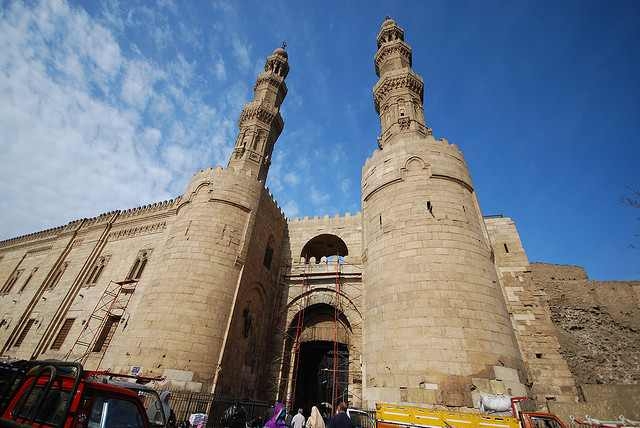
Function and Role of Bab Zuweila
Exploration of Bab Zuweila's role in the city's defence system
Bab Zuweila played a crucial role in the defence system of Cairo’s Old City. Constructed in 1092, this fortified gate was one of three entrances into the medieval city, providing a strategic point of defence. The twin towers, or minarets, of Bab Zuweila, served as watchtowers, allowing guards to scout for enemy troops in the surrounding countryside. Over the years, the gate has witnessed numerous battles and conquests, proving its importance as a defensive stronghold.
Not only did Bab Zuweila safeguard the city, but it also held significance in Cairo's economic and social life. The gate was a major trade route for overland travellers, connecting the city with other regions. It served as a hub for commerce, attracting merchants and traders. Moreover, Bab Zuweila played a role in the city's social life. It was from this grand entrance that the Sultan would watch the beginning of the annual pilgrimage to Mecca, and sometimes, executions would take place here.
The historical importance of Bab Zuweila cannot be understated. It had witnessed significant events in Cairo’s history, such as the Mongol invasion in 1260 when the heads of envoys were displayed on its walls. Additionally, the gate is associated with cultural traditions and festivals that are celebrated to this day. Nearby attractions, such as Al-Azhar Park and Sultan Hassan Mosque, further enhance the cultural significance of Bab Zuweila.
Bab Zuweila is the heart of Cairo’s Old City, playing a vital role in its defence, economy, and social life. Its enduring legacy and rich history make it an iconic landmark that continues to captivate visitors and locals alike.
Discussion on Bab Zuweila's significance in economic and social life
Bab Zuweila holds immense significance in Cairo's economic and social life. As one of the city's major landmarks, it attracts tourists worldwide, contributing to the local economy. The gate is surrounded by a bustling neighbourhood filled with shops, cafés, and markets catering to locals and tourists. These businesses thrive on the influx of visitors who explore and learn about the rich history and culture of Bab Zuweila.
Furthermore, Bab Zuweila plays a crucial role in the social fabric of Cairo. It is a place where people gather, exchange stories, and celebrate cultural traditions. The gate has witnessed countless events and festivities, connecting generations and bringing the community together. The nearby Al-Azhar Park and Sultan Hassan Mosque are popular attractions that enhance the social and cultural experience of visiting Bab Zuweila.
In addition, Bab Zuweila is deeply rooted in the history of Cairo and serves as a reminder of the city's glorious past. It has withstood the test of time and is a symbol of resilience and endurance. The gate's role in the city's defence system highlights its strategic importance, while its association with important historical events further solidifies its significance.
Overall, Bab Zuweila is not just a physical structure but a living testament to Cairo's heritage and its place in the hearts and minds of its people. It continues to be a vibrant centre of economic and social activity, making it an indispensable part of the city's fabric.
Cultural and Historical Significance of Bab Zuweila
Examination of Bab Zuweila's Connection to important events in Cairo's History
Bab Zuweila, constructed in 1092, is significant in Cairo's rich history. This iconic gate has witnessed and played a role in numerous important events throughout the centuries.
One of the most notable events associated with Bab Zuweila is the clash between the Mamluk and Mongolian armies in 1260. This battle, known as the Battle of Ain Jalut, resulted in a resounding victory for the Mamluks and marked a turning point in the expansion of the Mongol empire. Bab Zuweila was where the Mamluk leader, Qutuz, displayed the heads of six envoys sent by the Mongols, symbolising their defiance and determination to defend Egypt.
Another significant historical moment connected to Bab Zuweila is the construction of the Al-Muayyad Mosque in 1415. The mosque was built by a former prisoner who vowed to destroy the dungeon and replace it with a place of worship. This event signifies the enduring legacy of Bab Zuweila and its cultural and religious importance.
From its role in important battles to its association with sacred sites, Bab Zuweila has become a symbol of Cairo's history and a testament to its enduring heritage.
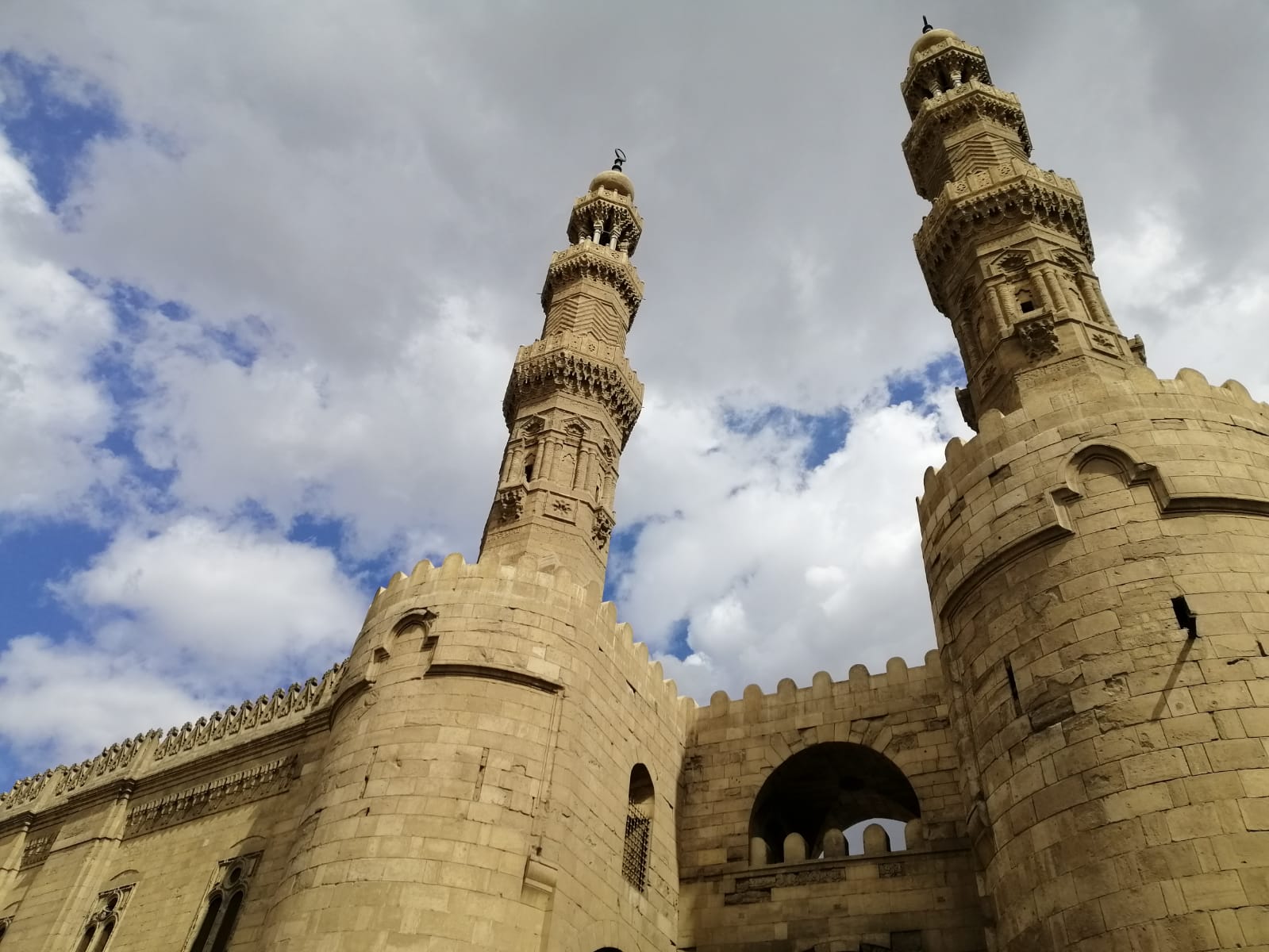
Overview of the cultural traditions and festivals associated with Bab Zuweila
Bab Zuweila, a significant historical and cultural landmark, is deeply embedded in the cultural traditions and festivals of Cairo. This iconic gateway has been the venue for numerous cultural celebrations and events that have played a pivotal role in shaping the city's identity.
One such tradition is the annual Mawlid al-Nabi celebration, which commemorates the birth of the Prophet Muhammad. This joyous occasion attracts locals and tourists, who gather at Bab Zuweila to participate in vibrant processions, listen to religious speeches, and enjoy traditional music and dance performances.
Another important event at Bab Zuweila is the Cairo International Film Festival. This renowned film event showcases a wide range of international cinema, drawing filmmakers and movie enthusiasts worldwide. The historical setting of Bab Zuweila adds a unique and enchanting backdrop to the festival, creating a truly memorable experience for attendees.
Additionally, Bab Zuweila is also a popular location for traditional Egyptian weddings. The grand entrance and towering minarets serve as a picturesque backdrop for wedding photos, and the surrounding area offers a charming atmosphere for wedding parties and celebrations.
The cultural traditions and festivals associated with Bab Zuweila have played a crucial role in preserving and promoting Cairo's rich heritage. This iconic landmark continues to be a vibrant hub of cultural activities, attracting visitors from far and wide to experience the essence of Egyptian traditions and celebrations.
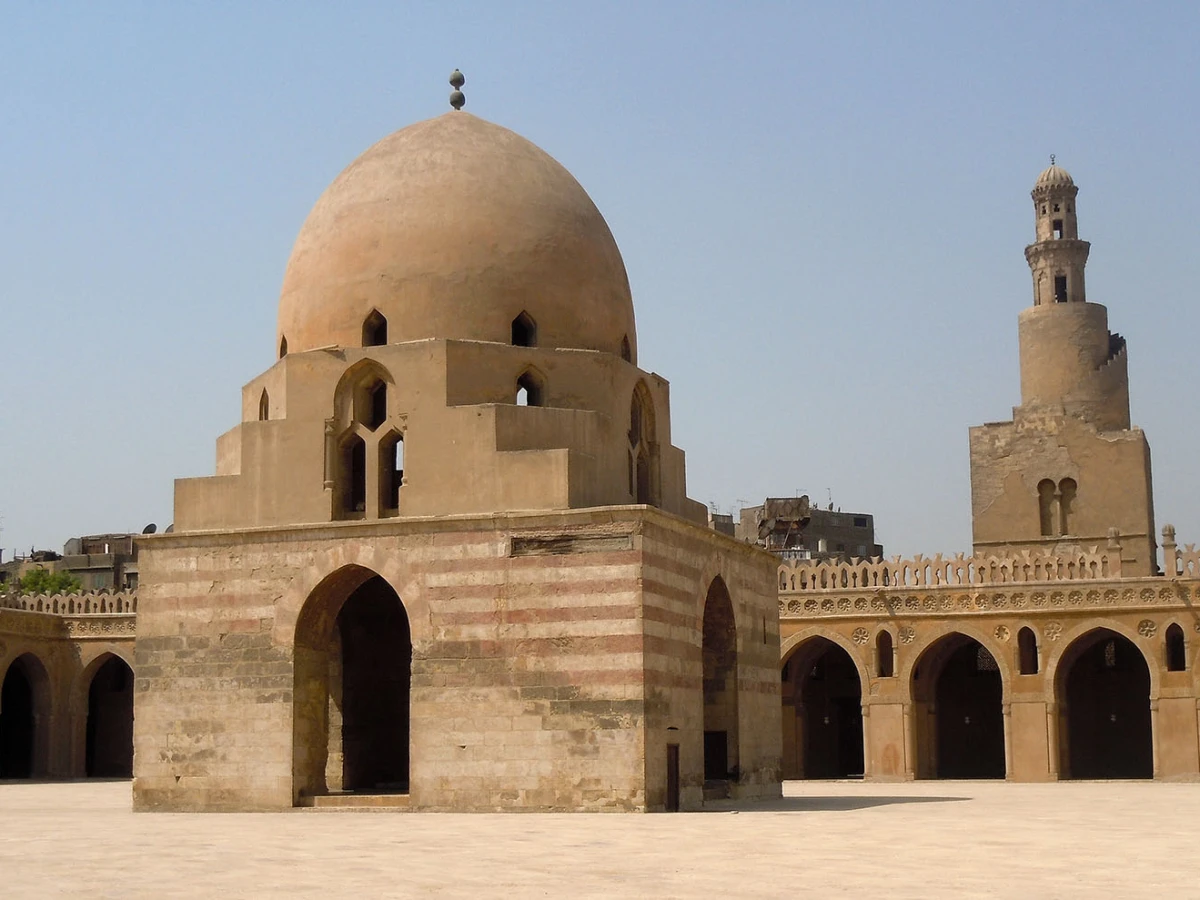
Tourist Attractions around Bab Zuweila
Mention nearby attractions such as Al-Azhar Park and Sultan Hassan Mosque
Located in the heart of Cairo's Old City, Bab Zuweila is not only a historical and cultural landmark but also a gateway to other nearby attractions. Just a stone's throw away, you will find Al-Azhar Park, a picturesque Islamic park perfect for a stroll or a romantic outing. Al-Azhar Park offers stunning views of Cairo's skyline and beautifully landscaped gardens, fountains, and a lake. It is a truly serene escape from the hustle and bustle of the city.
Another nearby attraction is the Sultan Hassan Mosque, a masterpiece of Islamic architecture. This grand mosque, built in the 14th century, is renowned for its magnificent domes, intricate carvings, and soaring minarets. It is a must-visit for anyone interested in experiencing the rich cultural heritage of Cairo.
These attractions, along with Bab Zuweila, provide a glimpse into the captivating history and traditions of the city. Whether exploring the defence system of Bab Zuweila, learning about important events in Cairo's history, or enjoying the cultural festivals associated with this iconic landmark, you will find that the nearby attractions only enhance your experience.
So, if you are planning a visit to Cairo's Old City, don't miss the opportunity to discover the wonders of Al-Azhar Park and Sultan Hassan Mosque. These attractions, combined with the enduring legacy of Bab Zuweila, will leave you with a deeper appreciation for the history and beauty of this remarkable city.
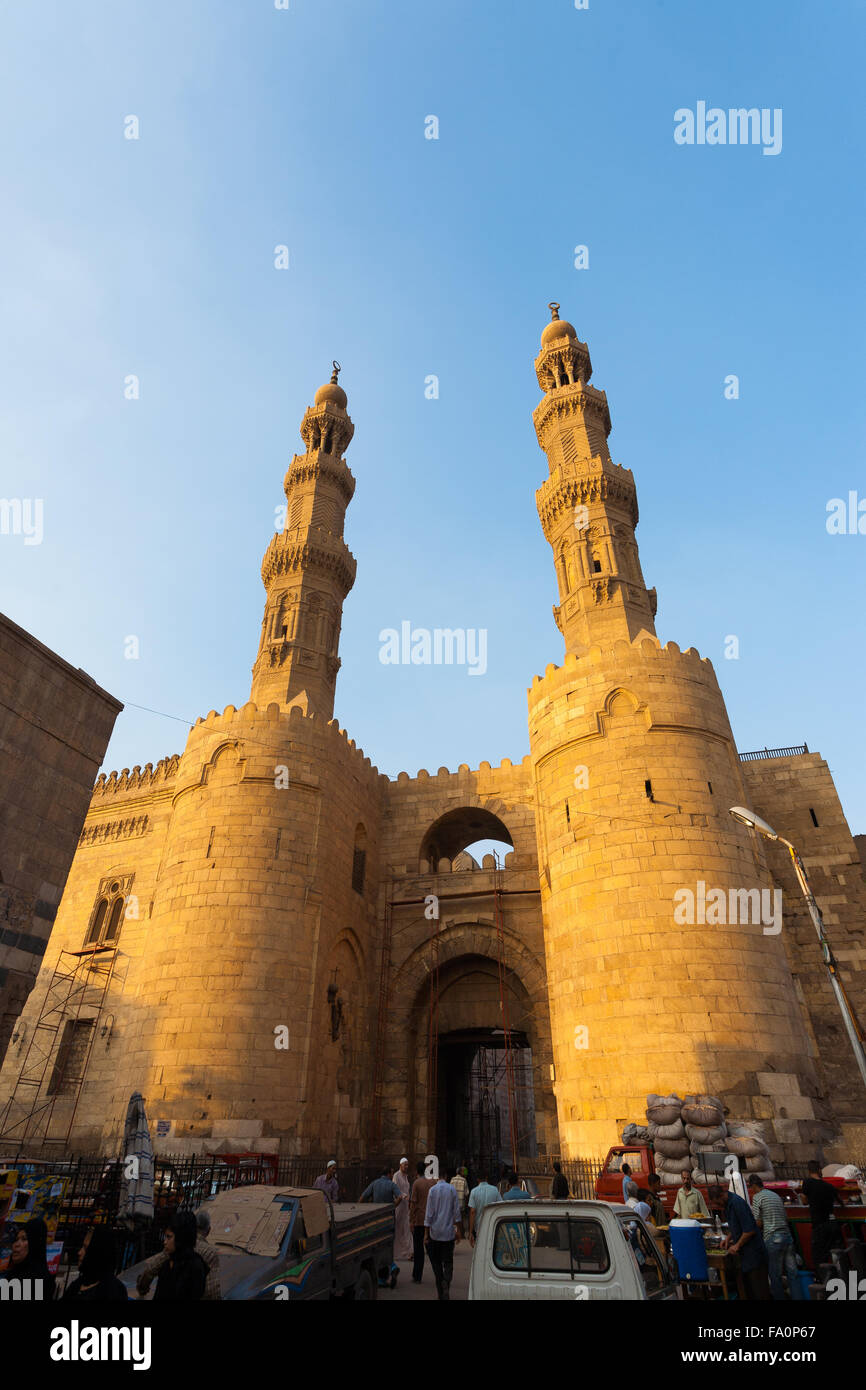
Final thoughts on the enduring legacy of this iconic landmark.
Bab Zuweila is a testament to Cairo's rich history and cultural significance. This iconic landmark, located in the heart of the city's Old City, holds immense historical and architectural value.
Its construction in medieval times and its role as a gateway to Cairo highlight its importance in the city's defence system and economic and social life. The grand entrance and towering minarets, along with intricate carvings and decorations, showcase the architectural beauty of Bab Zuweila.
Moreover, the connection of Bab Zuweila to important events in Cairo's history, such as the Mamluk victory over the Mongols, adds to its enduring legacy. The gateway also has associated cultural traditions and festivals, further deepening its significance. Visitors can explore nearby attractions like Al-Azhar Park and Sultan Hassan Mosque, which enhance the overall experience.
Bab Zuweila's ability to withstand the test of time, accepting and incorporating various layers of history, speaks to its cultural and historical resilience. In the end, Bab Zuweila stands as a symbol of Cairo's vibrant past and continues to captivate visitors with its storied past and architectural splendour.
